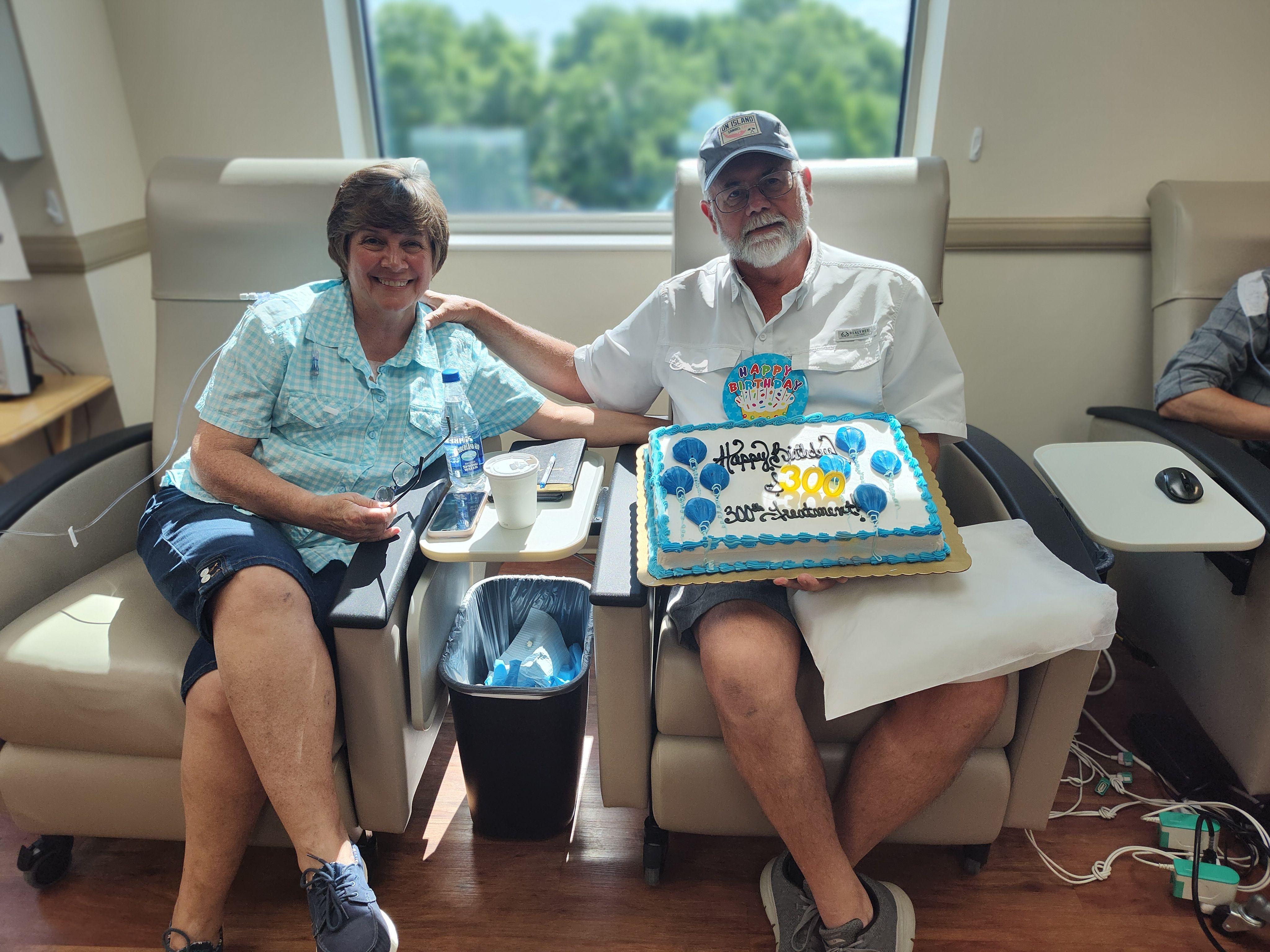Idiopathic multicentric Castleman’s disease (iMCD) is a rare and complex immune disorder. This is my personal story of living with iMCD, navigating the challenges of diagnosis, and finding effective treatment with siltuximab (Sylvant). My hope is to shed light on this rare disease and emphasize the importance of self-advocacy for patients facing similar health challenges.
My journey began unexpectedly amidst a personal tragedy. For 20 years, my wife and I enjoyed a full and active life. However, our lives took a turn when she was diagnosed with an aggressive form of cancer. While caring for her, I began experiencing troubling symptoms, including shortness of breath and a persistent feeling of not getting enough air.
A couple celebrating a medical milestone.
My primary care physician ordered numerous tests, including bloodwork and a stress test. An alarming finding on the stress test led to a chest X-ray, which revealed 14 nodules in my lungs. A biopsy ruled out cancer, but provided no answers about the cause of my symptoms. Doctors suspected sarcoidosis, but opted for a watch-and-wait approach.
Tragically, my wife passed away after a four-year battle with cancer. Following her death, my symptoms dramatically worsened. I experienced debilitating night sweats, extreme fatigue, and swollen lymph nodes. A biopsy finally provided a diagnosis: iMCD. Simultaneously, I was mistakenly told I was likely HIV-positive, adding further confusion and distress to an already difficult time. Fortunately, this proved to be incorrect.
 A chest x-ray showing multiple nodules.
A chest x-ray showing multiple nodules.
My local doctors were unfamiliar with iMCD. After conducting their own online research, they informed me that I would need chemotherapy and had a life expectancy of approximately two years. They also recommended a bone marrow biopsy, which seemed unnecessary and illogical given the diagnosis.
Having witnessed the power of self-advocacy during my wife’s cancer treatment, I decided to take control of my own healthcare. I researched iMCD online and found a renowned expert at the University of Arkansas. After traveling from Ohio for a consultation, I was fortunate enough to be accepted into a clinical trial for siltuximab. The treatment significantly improved my health, but required 193 trips to Arkansas over several years. Today, I’m relieved to have access to the same treatment much closer to home.
iMCD is the most common subtype of Castleman disease, a group of three distinct immune system disorders. It’s a complex and often life-threatening condition that can be difficult to diagnose due to its varied symptoms. These symptoms, including swollen lymph nodes, flu-like symptoms, fluid buildup, and enlarged liver or spleen, can mimic those of other diseases.
The iMCD community is relatively small, with an estimated 1600 individuals living with the disease in the United States. However, due to the overlapping symptoms with other conditions, it’s likely underdiagnosed. Furthermore, the way iMCD manifests can vary significantly from person to person, leading to delays in diagnosis, as is often the case with rare diseases.
Greater collaboration among medical specialists is crucial for improving the diagnosis of rare diseases like iMCD. Unlike many other rare diseases, iMCD has an FDA-approved treatment, siltuximab, that is effective for many patients. Ongoing research, spearheaded by organizations like the Castleman Disease Collaborative Network, offers hope for future advancements and a potential cure.
I consider myself incredibly fortunate to have found a treatment that allows me to manage my iMCD. I’ve also found love again and remarried. However, my second wife has been diagnosed with triple-negative breast cancer. Our combined experiences as both patient and caregiver have empowered us to face her diagnosis and treatment with strength and optimism. We hope our story inspires others navigating the complexities of diagnosis and treatment, regardless of how rare the disease.